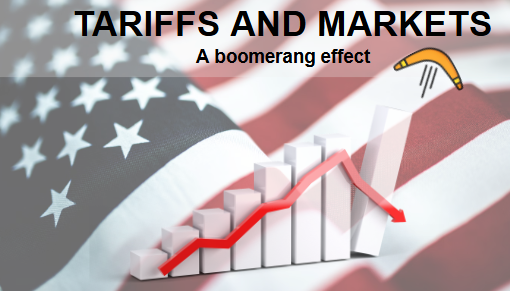Developing Economies Slow Down Global Growth
Lowest growth rate since the 2008 crisis in 2019; prolonged slowdown in 2020.
Published by Giulio Grisanti. .
Slowdown Macroeconomic analysis IMF Global economic trendsAccording to the latest estimates published by the International Monetary Fund (IMF) in the October edition of the World Economic Outlook (WEO), world GDP growth (calculated using Purchasing Power Parity) in 2019 will be less than what was forecasted in April. It is in fact estimated that the world economy will grow by 3%, 0.3 percentage points less than the 3.3% forecast released six months ago. This is particularly worrying, as it is the lowest growth estimate since the 2008 financial crisis. The factors that led to the slowdown in 2019 will not end in the coming months, also weighing on the forecasts for 2020. GDP growth for next year is estimated at 3.4%, in acceleration compared to 2019, but losing 0.2 percentage points compared to the previous estimate. The following figure shows, for each country, GDP growth rate at constant prices expected in 2020.
Source: ExportPlanning
The difficulties of developing economies
Compared to the April projections, 2019 growth forecasts for developing economies have undergone a 0.5 percentage points cut, which brings growth estimates to 3.9%. The slowdown will continue in 2020 as well, so as to bring the growth of developing countries from 4.8% previously estimated to current 4.6%.
An analysis of some macro-areas can highlight the areas in which growth has slowed down the most and bring out the nature of the factors that led to a lower growth forecast not only for the current year, but also for 2020.
Asia
One of the countries feeling the pain in Asia is India , whose growth estimate has been reduced by 1.2% to 6.1% for 2019. This cut is mainly due to the reduction in domestic demand. A recovery is expected in 2020, thanks to which the country will return to a 7% growth rate, in line with the average of the last 10 years.
Also the Chinese growth has suffered a reduction compared to the forecasts published in April (-0.2%), reaching the minimum growth rate in the last 28 years (6.1%). This slowdown is a consequence of the ongoing trade war with the United States, which has reduced the US demand for Chinese goods. Since the trade war does not seem to be over yet, the 2020 growth estimate for Chinese GDP has been revised downward : it now amounts to 5.8%, 0.3 percentage points less than previously estimated.
Deteriorating relations with the US also had a negative effect on economies close to the Asian Dragon, such as the ASEAN-51 area (Vietnam aside, whose growth rate estimate remained stable), which saw a reduction in Chinese demand for goods and services. Similarly to what was said above, the 2020 growth forecast for this area is 0.3 percentage points lower than expected in April, due to the trade war.
Latin America
The downward revision of 1.2 percentage points of Latin American growth, which is now expected to grow at 0.2%, is due to multiple factors. First of all, the sluggish growth in Brazil and Mexico (below 1%). For the first country, the reduction in the growth rate is due to an accident in one of the main iron ore mines in south-eastern Brazil, whose closure has brought down the export of raw materials. In Mexico, on the other hand, low investments and lower domestic consumption were the main contributors, due to political uncertainty. Moreover, the crisis in Venezuela and the difficult situation in Argentina have further weakened the growth estimates for the entire area.
2020 growth forecasts give Latin America a 1.8% growth, accelerating compared to 2019, but 0.6 percentage point less compared to the April forecast, indicating that the current tensions will continue during 2020 .
Developed economies
For developed economies growth is forecasted at 1.7%, 0.1 percentage points less than in April. This slowdown is also due to the difficulties that the Euro area2 is facing, mainly due to the decline in the German Automotive sector . In fact, Germany's growth in 2019 is 0.3 percentage points lower than the previous estimate and is now expected at 0.5%.
The German crisis has affected not only growth of Germany, but in the entire Euro area and in particular of Italy , which represents the slowest among EU countries with its "zero growth" forecast.
The outlook for 2020 shows a two-speed Europe , in which western countries (apart from Luxembourg and Ireland) are engaged in a timid recovery, growing less than 2%, while eastern countries will grow at rates above 3%.
Conclusions
The protectionist tendencies and the general climate of uncertainty that has arisen in recent months have damaged not only developed economies, but above all the countries whose external demand comes from these economies. The imposition of American duties on Chinese goods, in fact, has not only affected the Chinese economy, but above all the areas of South-East Asia . Short-term effects are likely to continue in 2020 , year in which economic growth is expected to accelerate compared to 2019, but which sees developing economies as the main countries hit by the global slowdown.
1 Indonesia, Malaysia, Philippines, Thailand and Vietnam
2 Austria, Belgium, Cyprus, Estonia, Finland, France, Germany, Greece, Ireland, Italy, Latvia, Lithuania, Luxembourg, Malta, Holland, Portugal, Slovakia, Slovenia, Spain.


